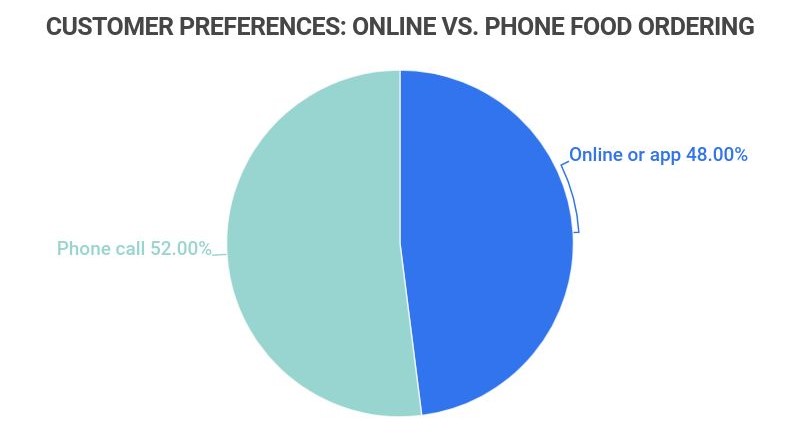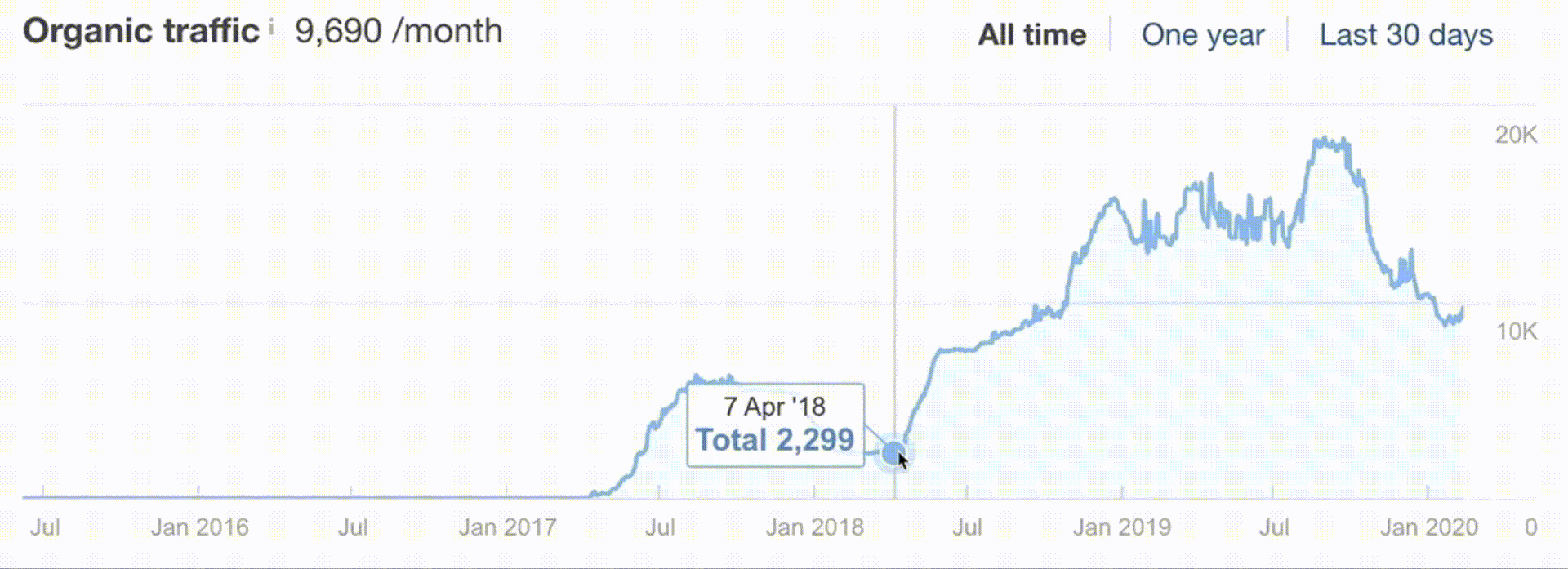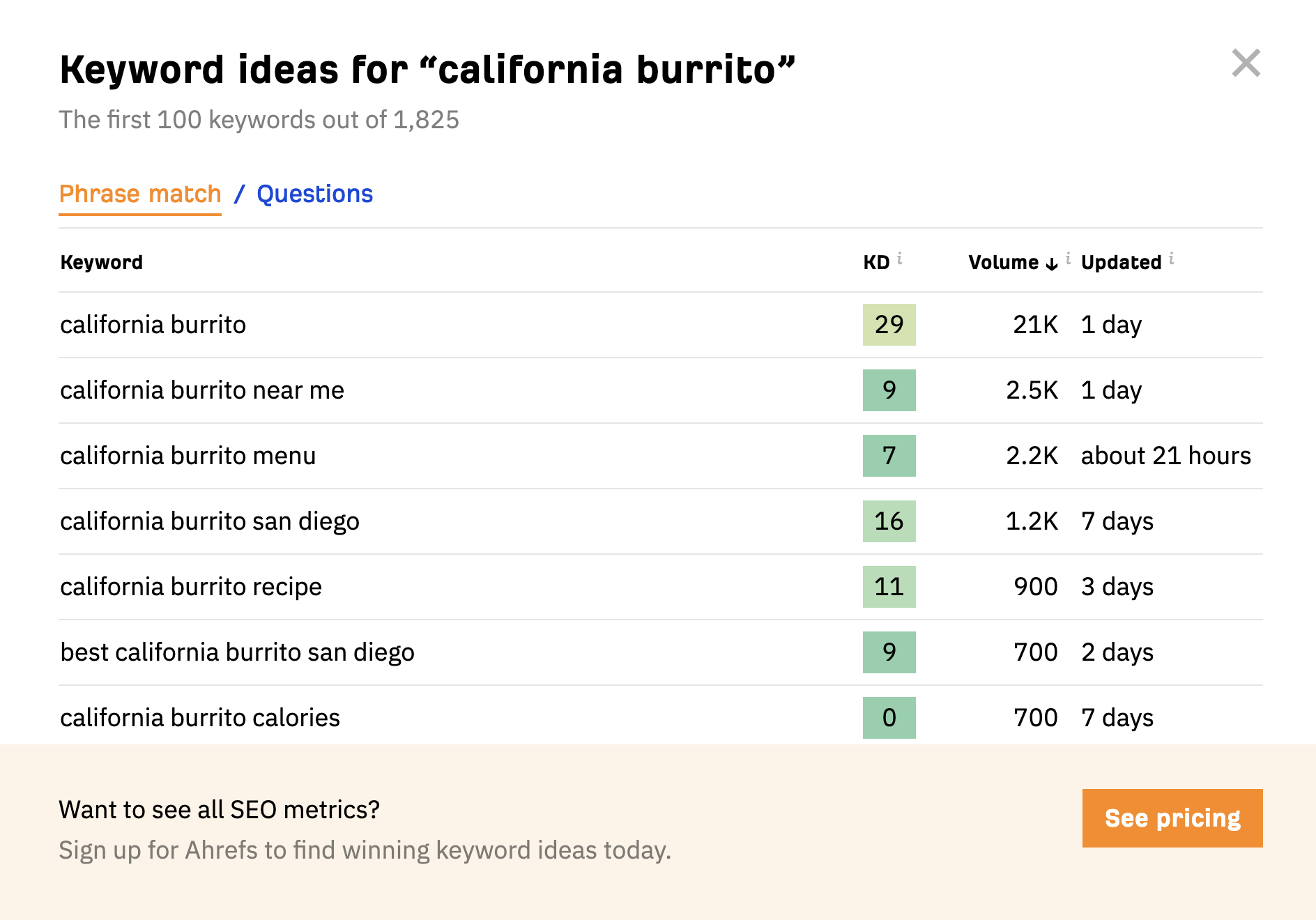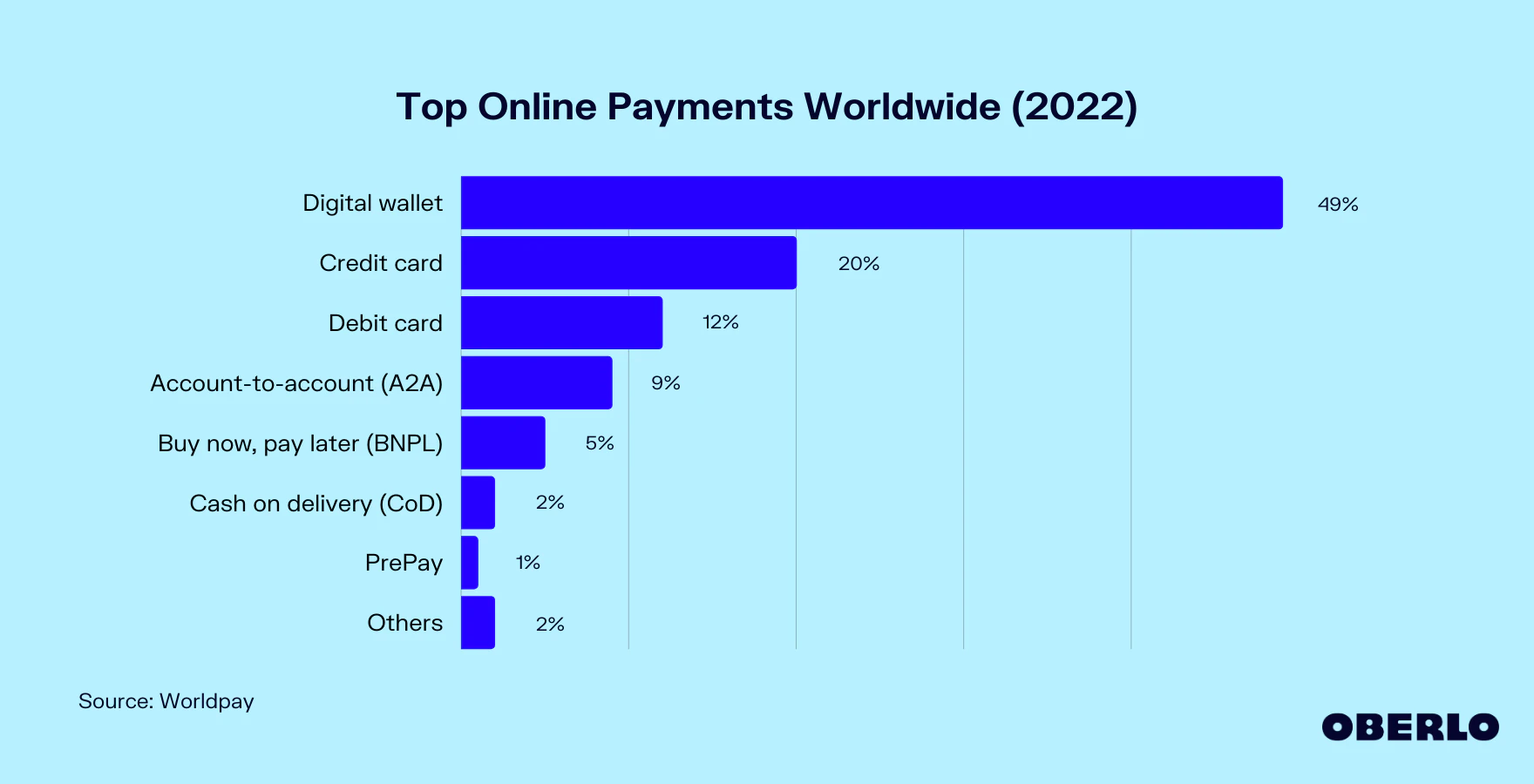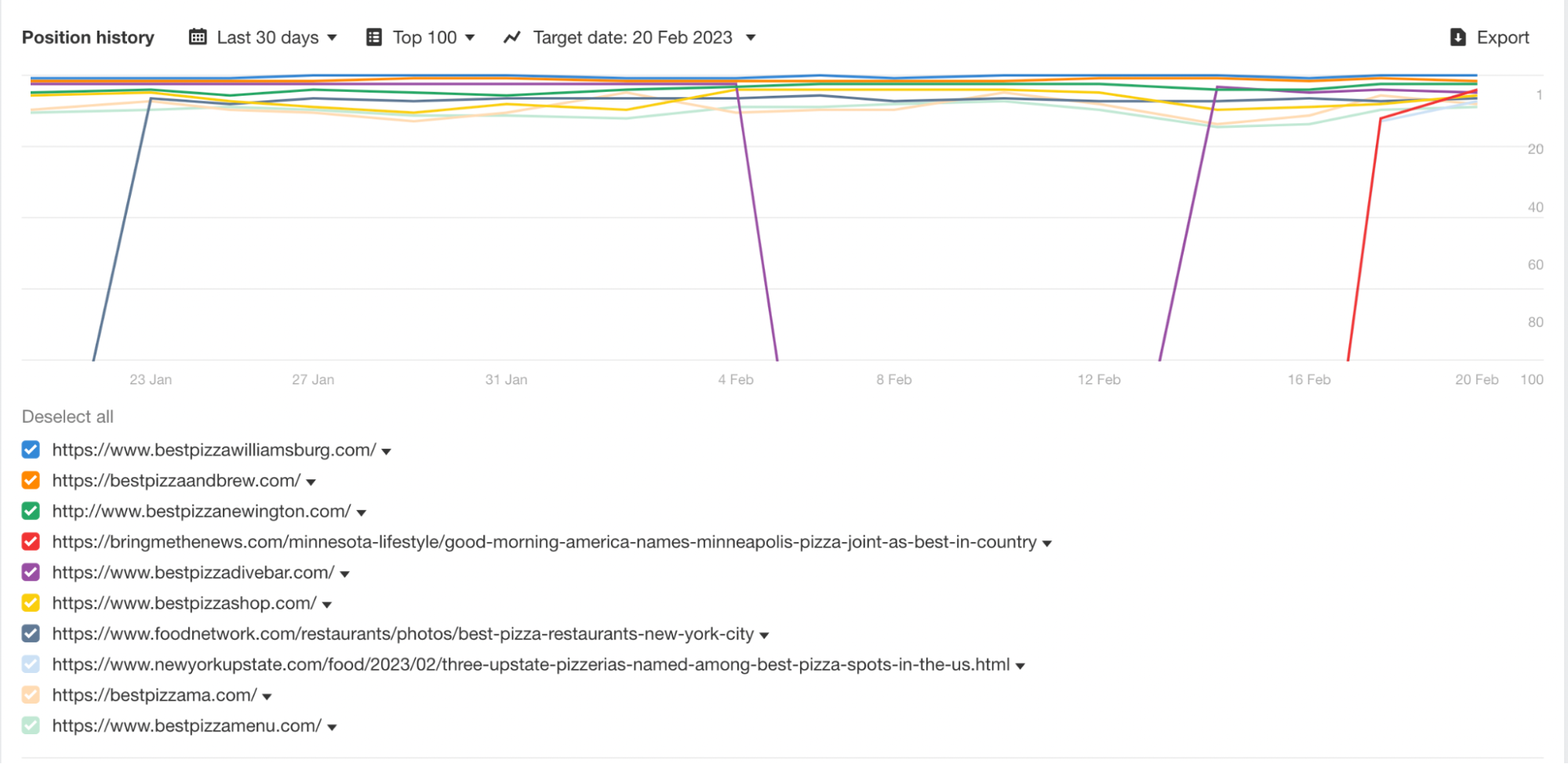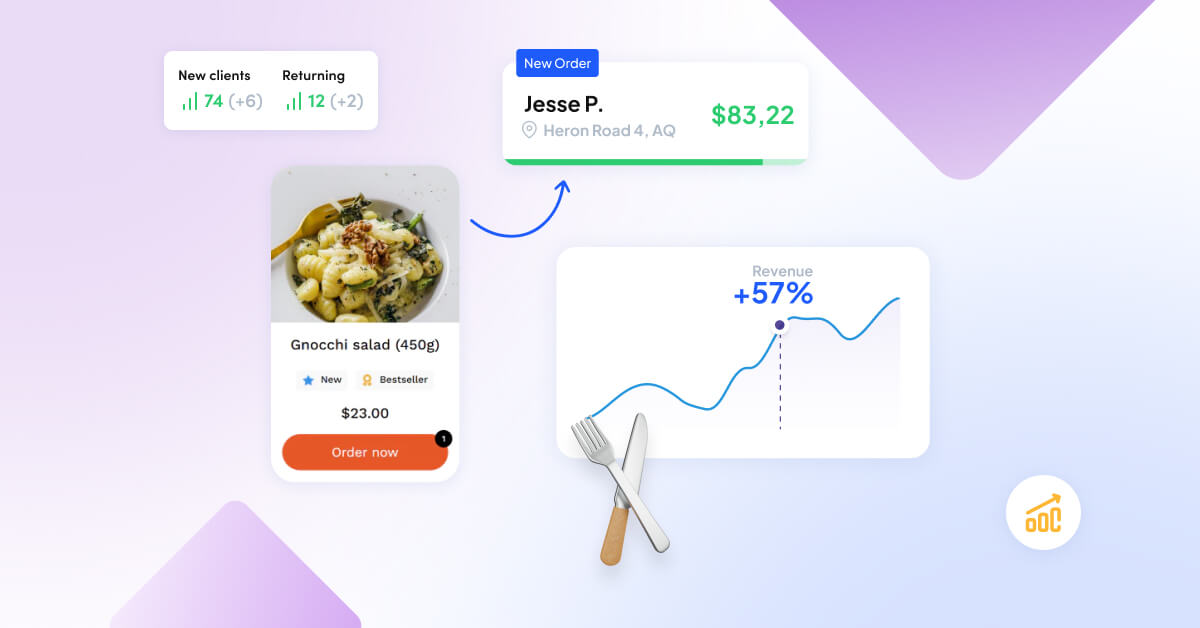The online food market is ruthless. Restaurant owners not only have to deal with fierce competition but also face over 30% delivery commissions. Making a decent living, particularly as a small restaurant owner, can be extremely challenging.
That said, where there’s a will, there’s a way. If you’re willing to give it some effort, we promise you are going to pull ahead.
We’ve done our research and came up with 11 tips on how to increase online ordering sales at your restaurant. What’s more, we’ve developed ways to cut costs and boost your revenue all at the same time. So, grab your favorite beverage and let’s roll.
1. Start selling online from your website (instead of third-party ordering services)
Most restaurants take the conventional route and sell their food through third-party delivery apps like GrubHub, Doordash, or Uber Eats. And considering how dominant these industry behemoths are, it’s not a surprise that very few restaurant owners are aware of alternative solutions.
As a consequence, they end up paying massive commissions (sometimes up to 40%!) per order. In essence, this means they are paying tens of thousands of dollars per month just to be able to sell food online. Not fair.
The unfortunate reality is that for many small restaurant owners, these terms are simply game-ending. They hang on a thread, simply trying to survive. How are you supposed to grow your business in such conditions?
The best way to remain competitive is to launch your own system. That said, developing a system might cost well over $60.000. Then come all the maintenance costs, and suddenly you’re possibly facing a hundred big ones.
How to Cut Delivery Fees by Up to 30%
So, what’s the way out? We found that the best solution is launching your food ordering system through a restaurant-oriented ordering platform that can provide you with a complete restaurant ordering system for a flat fee. Not only is this the best survival strategy, but it has already proven itself to be the best way to develop and grow your restaurant business.
Our clients have reported massive growth in total revenue over and over again. Even though the business might have slowed down at the very beginning, this has proven to be the best long-term strategy for restaurant growth.
Expected results
We’ve calculated what you can expect from this strategy
| Selling online from your own website with UpMenu | Selling online through third-party ordering services like Uber Eats or GrubHub | |
|---|---|---|
| Commission | 0% (flat fee subscription 49$ – 169$) | 20-30% |
| Monthly orders | 300 | 300 |
| Average order | 45$ | 45$ |
| Expected revenue | ~ $13 500 | ~ $9450 ($4050 in commissions) |
*Run in-house calculations to see how much you can save.
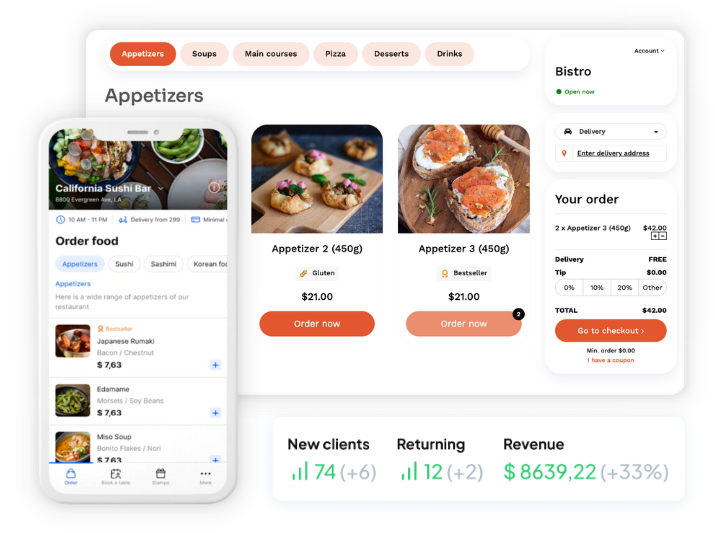
2. Sell food through a branded mobile app
It can’t be argued that more people order from their apps rather than their computers. With over 6.3 billion smartphone users across the world, the mobile app industry is thriving with no sign of slowing down. App usage is >still growing at a steady rate, without any signs of slowing down in the foreseeable future.
Frankly, we don’t think there is any need to sell you on mobile apps. 70% of consumers prefer to order directly from restaurants rather than via a third-party app so that their money goes straight to the restaurant and not the big-food conglomerate.
Businesses that can afford to have a branded restaurant mobile app simply have them. The biggest challenge lies in the cost of developing one, as it can easily take well over $50.000 to do so. That’s when flat-fee-based restaurant systems come in handy.
Examples
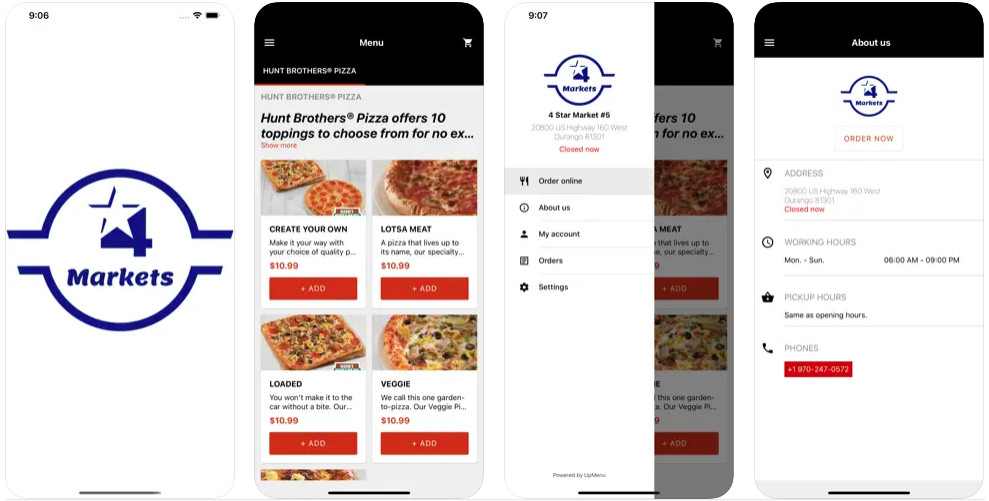
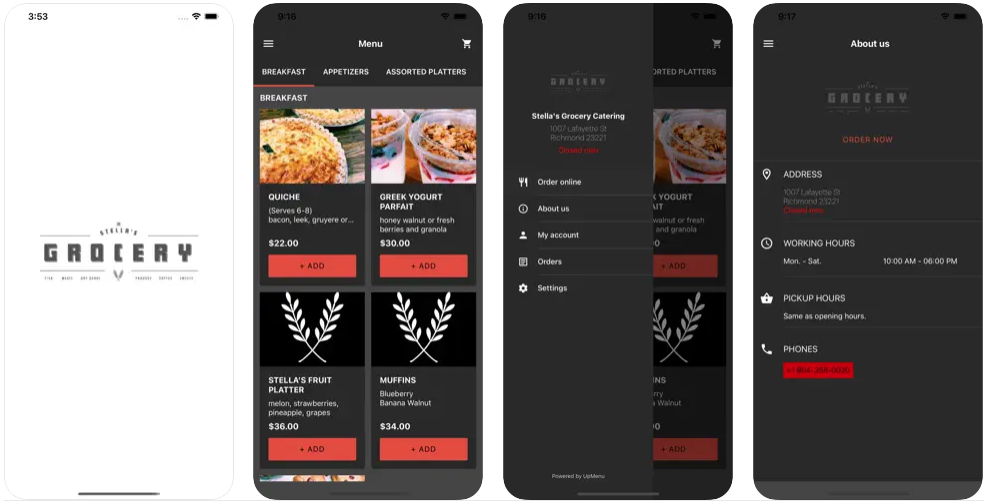
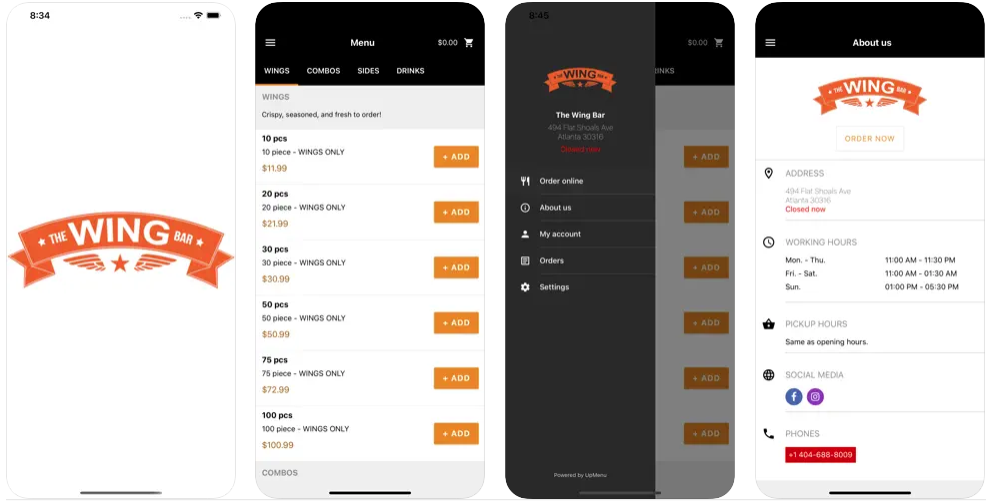
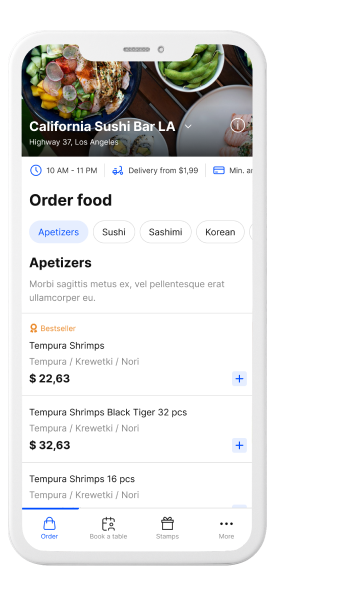
3. Boost Restaurant Organic Traffic With an SEO Strategy
There is a saying that ‘If you’re not in Google, you do not exist.’ It rings more true each year as more and more restaurant owners build their businesses by taking over their local search results.
By employing a Restaurant SEO strategy, you can significantly increase your sales. One of our clients saw a 20% uptick in website traffic and a 69% revenue boost within three months of utilizing local SEO. With a focus on keyword optimization and improved search engine ranking, you can attract more potential customers and enhance your sales. Simply put, a well-executed local SEO strategy can positively transform your restaurant business.
Building SEO presence might not be the most intuitive way of increasing footfall, yet it is one of the most lasting ways of doing so. If you’re able to rank your restaurant website high in search engines, you’re essentially creating a free advertisement for anyone who searches for a restaurant in your area.
How to get started:
1. Build a website (if you don’t have one already). You can use a ready-to-use restaurant website builder.
2. Research the keywords your potential customers may use to find your restaurant on Google. You can also use free SEO tools like Ahrefs Keyword Generator to hit the targets.
3. Next, you need to start optimizing your website. Create engaging and relevant content that relates to your restaurant. Remember to use keywords you found in previous steps.
4. Register your restaurant website on review sites like Yelp or TripAdvisor to rank your restaurant even higher.
5. Since SEO is a highly technical topic, you might want to hire freelancers from websites like Fiverr or UpWork to help you out.
Nothing speaks louder than statistics. Let us leave you with some food for thought:
- 85% of retailers say SEO and paid search are the most effective means for getting new customers.
- It is estimated that SEO may generate up to 1000% more traffic than social media.
Organic traffic drives around 40% of total revenue.
4. Optimize Your Online Menu for Upselling
There are plenty of areas where you can beat your competition. Luckily for you, a lot of restaurant businesses completely disregard the marketing side of things, making it easier for you to get ahead. For example, you can make a couple of tiny adjustments to your menu and garner some quick results.
One thing you can do is enrich your online menu with high-quality images and include combo options to upsell your products. By pricing accordingly and making your combo offers irresistible, you can make a profit simply by adjusting your menu.
We’ve calculated what you can expect from this strategy
| No upselling | Upselling | |
|---|---|---|
| Monthly orders | 300 | 300 |
| Average order | 15$ | 25$ |
| Expected monthly revenue | ~ $4500 | ~ $7500 |
| Expected yearly revenue | ~ $54000 | ~ $90000 |
*Run in-house calculations to see how much more you can make.

5. Offer more payment methods
People who usually order food online like to pay for it with a quick pay transfer. It’s up to you to meet the expectations of your customers by offering them as many payment methods as possible.
Different payment methods for restaurants
- Cash: Cash payment is one of the most traditional and widely accepted methods in restaurants. Customers can pay their bills using paper currency or coins.
- Credit and Debit Cards: Restaurants generally accept major credit and debit cards such as Visa, Mastercard, American Express, and Discover. Customers can simply swipe or insert their cards into the restaurant’s payment terminal and enter their PIN or sign the receipt.
- Mobile Payment Apps: With the increasing popularity of mobile payment apps, many restaurants now accept digital wallet platforms like Apple Pay, Google Pay, Samsung Pay, or other similar apps. Customers can link their credit or debit cards to their mobile wallets and make payments by tapping their smartphones or smartwatches on the payment terminal.
- Contactless Payments: In addition to mobile payment apps, contactless payments have gained traction, especially in response to the COVID-19 pandemic. Restaurants may accept contactless payment methods such as near-field communication (NFC), where customers can make payments by simply tapping their contactless-enabled credit or debit cards on the payment terminal.
- Online Payments: Some restaurants provide online ordering or delivery services through their websites or third-party platforms. Customers can make payments using their credit or debit cards directly on the website or app before the food is delivered or picked up. In addition you can offer functionality such as pay at the table to increase convenience for your customers.
- Gift Cards: Many restaurants offer gift cards that customers can purchase and use for future visits. These cards typically have a pre-loaded amount that can be used to pay for meals and other items at the restaurant.
- Mobile Wallets and QR Codes: Some restaurants have started implementing QR code menus that allow customers to scan QR code at their tables to view the menu, place orders, and make payments directly through the app.
6. Offer Multiple Ways of Serving Food
The more options you give, the better. Offer different ways of food delivery and on-site dining to please the widest possible audience. For starters, offer online food delivery, pick-up, dine-in, tableside ordering, and Google Ordering,
Examples
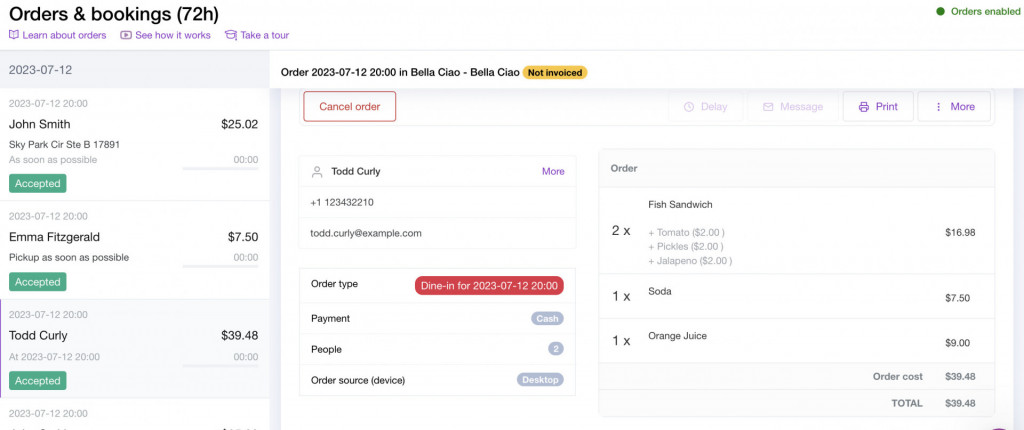
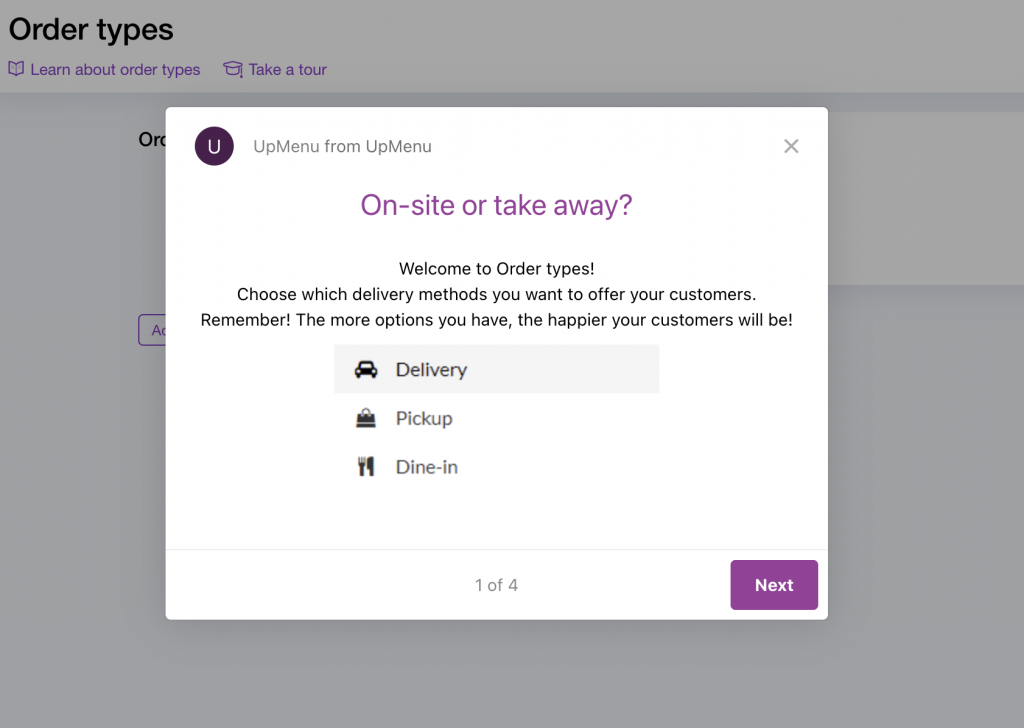
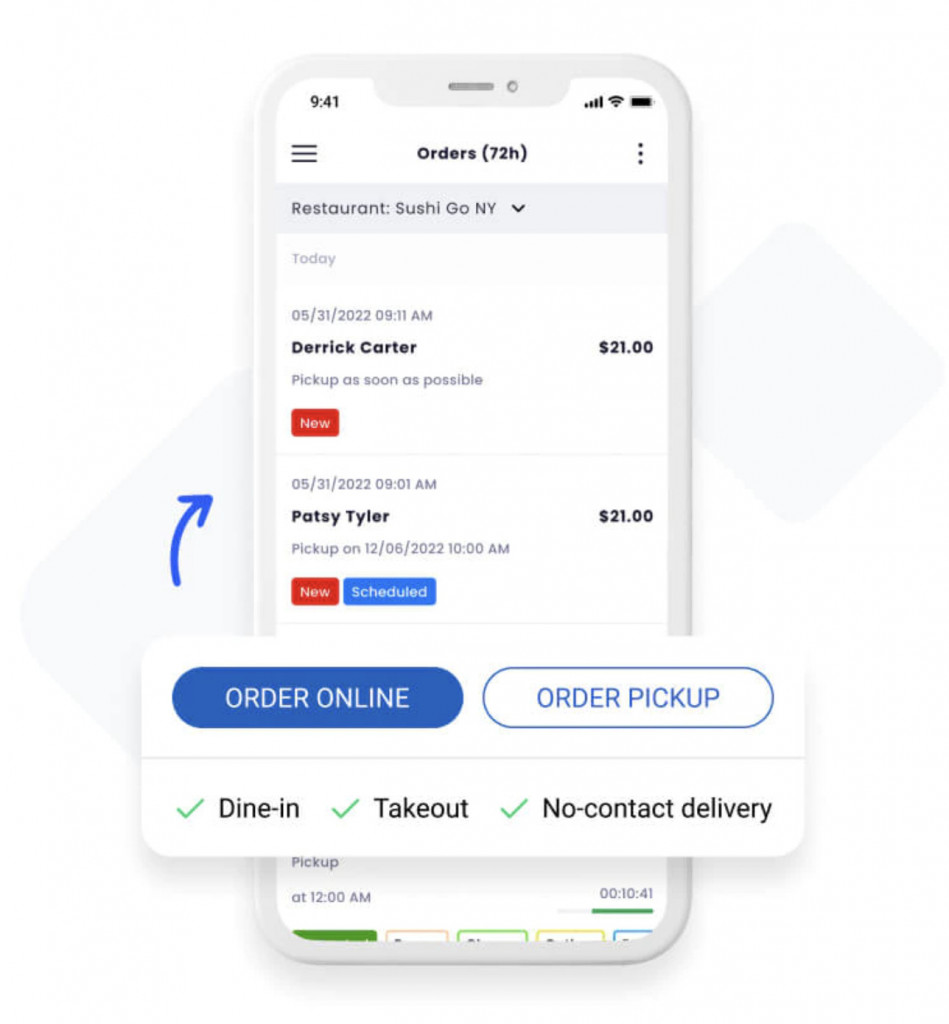
| Type of delivery | Numbers of orders/month | Average order value | Monthly revenue |
|---|---|---|---|
| Delivery | 822 | $20 | $16440 |
| Pick up | 411 | $20 | $8220 |
| Dine in | 120 | $20 | $2400 |
*These are just estimates. The end result will largely depend on the type of restaurant, location, and other conditions.

7. Boost Your Customer Retention With a Loyalty Program
By offering a restaurant loyalty program, you can enjoy increased customer retention as it incentivizes your customers to keep coming back to your restaurant. It fosters a sense of loyalty and encourages them to choose your establishment over competitors. Additionally, you can gather valuable customer data through the program, allowing you to personalize offers and enhance the overall dining experience for your loyal patrons.
How to do that:
To increase restaurant sales and attract more customers, follow these steps to build a loyalty program that fosters customer loyalty and enhances the overall customer experience:
- Set Clear Goals: Define objectives to boost restaurant sales by increasing customer retention and attracting new customers.
- Understand Existing Customers: Analyze the preferences and behaviors of your current customer base to tailor the loyalty program to their needs and expectations.
- Choose Program Structure: Select a program structure, such as a point-based system or tiered rewards, that incentivizes and rewards customers for their loyalty, creating happy customers who are more likely to return.
- Determine Program Mechanics: Establish how customers can earn points, such as based on their spending or frequency of visits, and define appealing rewards that entice customers to participate and continue engaging with your restaurant.
- Implement Technology: Utilize loyalty program software or partner with a third-party provider to efficiently manage customer participation, points accumulation, and reward redemption, ensuring a seamless experience for your customers.
- Promote Customer Loyalty: Market the loyalty program to attract new customers and educate existing customers about the benefits, encouraging them to stay loyal and choose your restaurant over competitors.
- Enhance Customer Experience: Focus on providing exceptional service, personalized offers, and exclusive perks to create a positive customer experience that reinforces loyalty and increases restaurant sales.
By following these steps and building an effective loyalty program, you can boost restaurant sales, attract more customers, and cultivate a loyal customer base that contributes to the overall success of your restaurant.
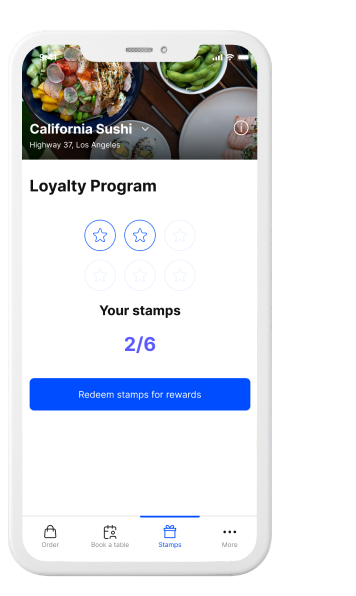
8. Boost Sales With Special Promotions and Discounts
Well-executed restaurant promotions can take you a long way. Hell, plenty of restaurants thrive simply because they have killer promotion programs. Attract new customers, incentivize repeat visits, create a sense of excitement and value, and boost sales and customer satisfaction.
Here are some ideas to consider:
- Happy Hours: Introduce special discounted pricing during select hours, enticing customers to visit during off-peak times and boosting overall restaurant sales.
- Two for One: Offer a “buy one, get one free” promotion to encourage customers to bring a companion, increasing the number of diners and driving more sales.
- Next Purchase Discount: Provide customers with a discount or coupon for their next visit, incentivizing return visits and fostering customer loyalty.
- Combo Meal Discount: Create bundled meal deals or combos at a discounted price, offering customers a convenient and cost-effective dining option that can drive higher sales per transaction.
- Discount by Food Category: Offer discounts on specific food categories or items to highlight certain menu items or encourage customers to try new dishes, expanding their choices and generating more sales.
By incorporating these promotions and discounts into your marketing strategies, you can attract new customers, increase restaurant sales, and nurture the loyalty of your existing customer base, ultimately contributing to the overall success of your restaurant in the competitive restaurant industry.
Expected results
| Promotion type | Extra orders per day | Extra day income |
|---|---|---|
| Happy hours | 25 orders x $45 average order value | $1125 |
| Two for one | 45 orders x $45 average order value | $2025 |
| Next purchase discount | 10 orders x $45 average order value | $450 |
| Combo meal discount | 38 orders x $45 average order value | $1710 |
| Discount by category | 24 orders x $45 average order value | $1080 |
*These are just estimates. The end result will largely depend on the type of restaurant, location, and other conditions.
9. Launch SMS, e-mail, and Push Campaigns
By integrating SMS, email, and push campaigns into your marketing strategy, you’re opening avenues to increase sales and attract customers to your restaurant. These methods offer dynamic ways to expand your restaurant’s reach, drawing in fresh faces while keeping your restaurant’s existing customers engaged and coming back for more. In essence, you’re broadening your visibility, strengthening connections, and driving profitability upwards.

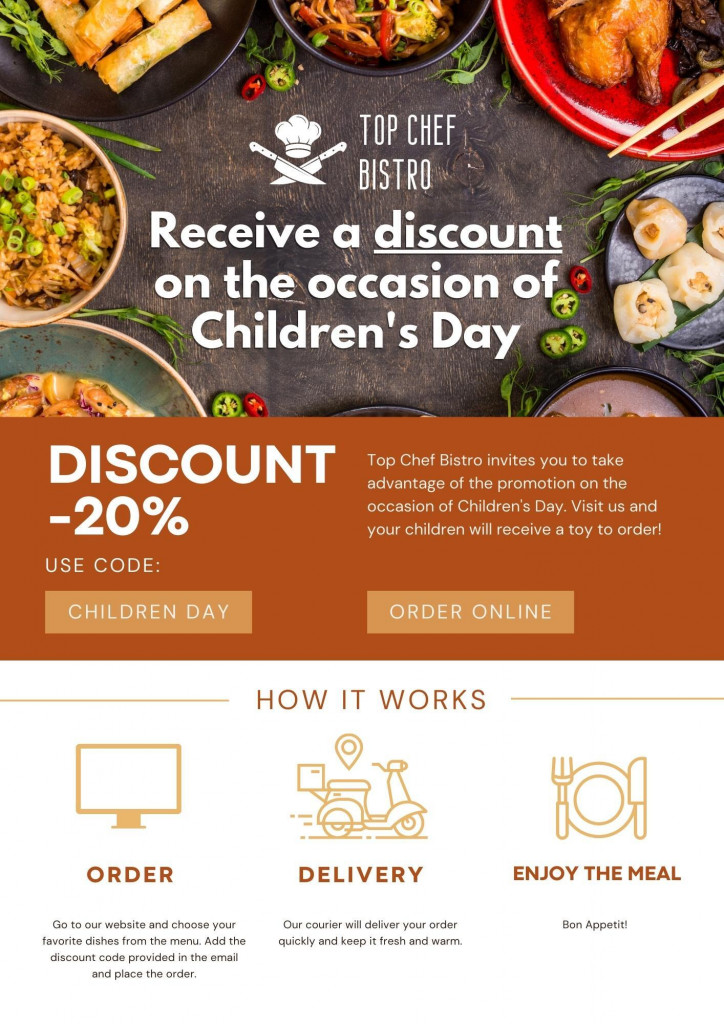

| Campaign type | Number of sent messages | Number of orders | Average order value | Cost | Profit |
|---|---|---|---|---|---|
| SMS | 438 | 18 | $25 | $155 | $295 |
| 1562 | 83 | $25 | $138 | $1937 | |
| Push notification | 1781 | 21 | $25 | Free | $525 |
*These are just estimates. The end result will largely depend on the type of restaurant, location and other conditions.
10. Boost Your Social Media Presence
If you’re serious about making big sales, you need to consider making your own restaurant social media strategy. Social media allows restaurant owners to precisely target their audience, effectively increasing sales by promoting menu highlights, special offers, or events. It’s one of the best ways to increase restaurant sales, as it enables direct interaction with customers and potential patrons, enhancing visibility and customer engagement.
How to do that:
- Identify Your Target Audience: Knowing who you’re trying to reach is essential. Figure out your ideal customers’ demographic, their likes, and their habits to tailor your content effectively.
- Engage With Your Audience: Engage directly with your customers through comments, shares, and likes. This will not only increase your restaurant’s reach but also foster a community around your brand.
- Showcase Your Online Ordering System: Don’t just mention it in passing – highlight it. Show how easy it is to use, the different meals available, and the delivery speed. This convenience can boost your sales significantly.
- Offer Exclusive Social Media Promotions: Give your followers a reason to engage. Special offers and discounts exclusive to your social media platforms can help you increase average restaurant revenue and attract new customers.
- Leverage User-Generated Content: Encourage customers to share their experiences at your restaurant. Reposting their content can help with customer acquisition, as it’s a form of word-of-mouth recommendation that can increase your reach.
- Use Review Sites: Encourage your happy customers to share their experiences on sites like TripAdvisor and Yelp. Respond to all reviews to show you value feedback. It’s a great way to reach more people and bring in new customers.
- Use Ads to Reach a Wider Audience: Organic reach can only go so far. Invest in social media ads to target your audience more effectively, potentially leading to a considerable increase in your restaurant’s revenue.
Examples
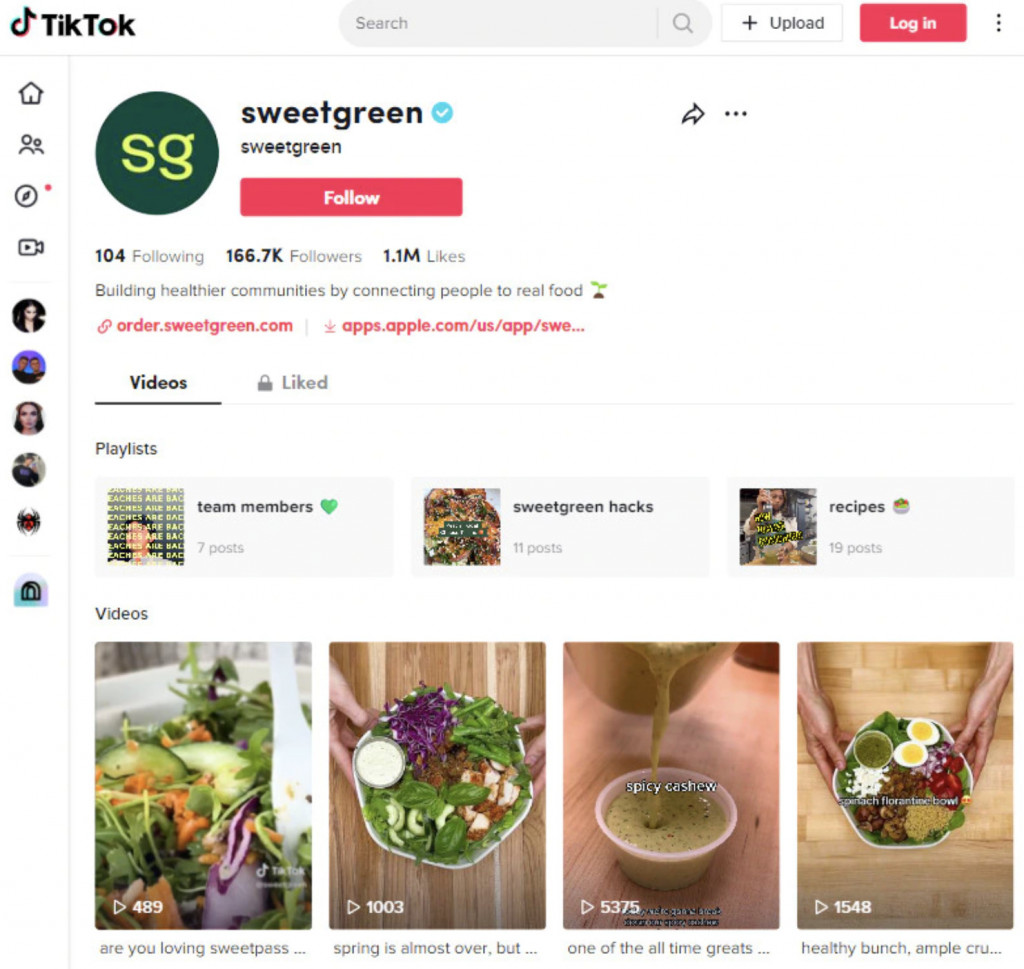

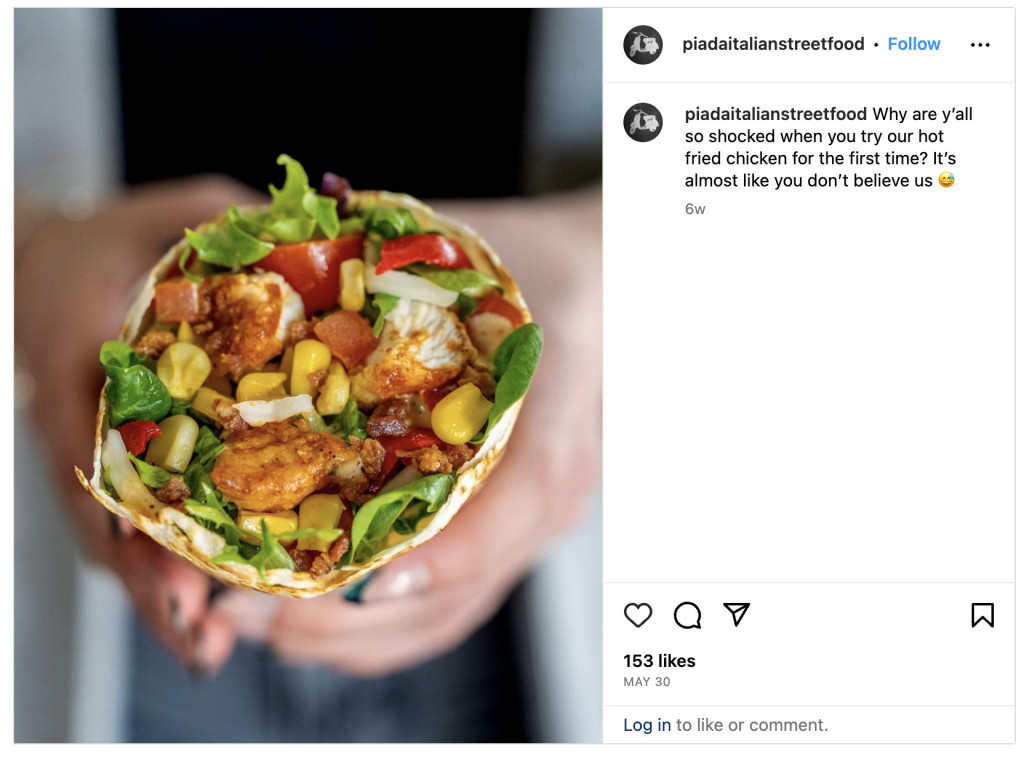
Expected results
Key statistics to keep in mind
- 42 percent of U.S. customers report having interacted with restaurants on at least one social media platform. 66 percent of that group said they were more likely to visit or order food from the restaurant.
- 36 percent of U.S. diners follow restaurants on social media. Of that group, 39% do so to decide whether they want to dine in or order the food.
- 62 percent of U.S. restaurant-goers say they log on to their social media several times per day.
11. List Your Restaurant on Google My Business
Google My Business is a free tool that lets you manage how your business appears on Google Search and Maps. It’s your way of making a great first impression, showing off your services, collecting and responding to reviews, and helping potential customers find your location.
How to Register a Restaurant on Google Business
- First, log into your Google Account on your computer. If you don’t have one, create a new account using your business email domain.
- Next, go to the “create a profile” section.
- Type in your business’s name. As you do so, you might see your business in a dropdown list of suggested businesses. If so, you can select it from there.
- If you see a message stating that your business is already verified by someone else, you’ll need to request ownership of the Business Profile.
- Now, you need to specify your business category. Search and select it from the available options.
- Click “Next.”
- Decide whether your business has a physical location that customers can visit:
- If your business operates from a storefront that’s open during business hours, click “Yes.” You might need to input your business address or place a marker on a map to indicate your location. Once done, click “Next.”
- If your business doesn’t have a staffed storefront, click “No.”
- Enter the service area of your business. This could be specific cities, postal codes, or other regions where your services are available. You can add up to 20 service areas.
- Note: It’s advisable not to extend your service area beyond a 2-hour driving distance from your business location. However, for some businesses, a larger service area may be appropriate.
- Input your business’s phone number and website URL, then click “Next.”
- Tip: Provide the direct phone number or specific store page for each location instead of a central call center number.
- Google also offers an option to create a website based on the information you’ve provided.
- Once all the information is filled out, click “Finish.”
- Now you can choose a verification option:
- To verify immediately, find the red banner at the top and click “Verify now”.
- To verify later, click “Verify later” and then “Later.”
- If you’re not authorized to manage the Business Profile for your business, find the person in your organization who is authorized to do so and ask them to continue the process.
Once you’ve registered your business, you will be able to follow all the key statistics that will help you grow your brand more effectively. It might take a while to get used to the dashboard, but it’s well worth it. Remember to review all your information thoroughly before requesting verification. Follow the link to get the best out of your Google Business profile for restaurants.
Key Takeaways
- Start selling online from your website: instead of relying on third-party ordering services, restaurants can cut delivery fees by up to 30% by selling directly from their own websites.
- Sell food through a branded mobile app: having a dedicated app for your restaurant can be very expensive. Consider using a fixed-price food ordering system that offers a dedicated mobile app for a much lower price.
- Boost restaurant organic traffic with an SEO strategy: implementing an SEO strategy can help increase the restaurant’s online visibility and drive more traffic to the website or app.
- Optimize your online menu for upselling: a well-structured and enticing online menu can encourage customers to add more items to their orders, increasing restaurant sales and revenue.
- Offer more payment methods: providing various payment options makes it more convenient for customers to place orders.
- Offer multiple ways of serving food: this could include dine-in, take-out, delivery, and curbside pickup options. The more, the better.
- Boost your customer retention with a loyalty program: rewarding repeat customers with a restaurant loyalty program encourages them to continue ordering from the restaurant, and drives repeat business.
- Increase your restaurant sales with special promotions and discounts: offering special deals can attract more customers and stimulate your restaurant’s sales.
- Launch SMS, e-mail, and push campaigns: regular communication with customers through various channels can keep your restaurant top-of-mind and encourage repeat orders.
- Boost your social media presence: Boost your social media presence: a strong social media presence can help attract new customers and engage with existing ones. Get inspired by exploring different restaurant social media post ideas.
- List your restaurant on Google My Business: this can increase the restaurant’s visibility on Google Search and Google Maps, making it easier for potential customers to find and order from the restaurant.
- Looking for more? If you’re a restaurant owner looking to optimize your delivery services, make sure to check out these 5 extra tips on how to increase food delivery sales


